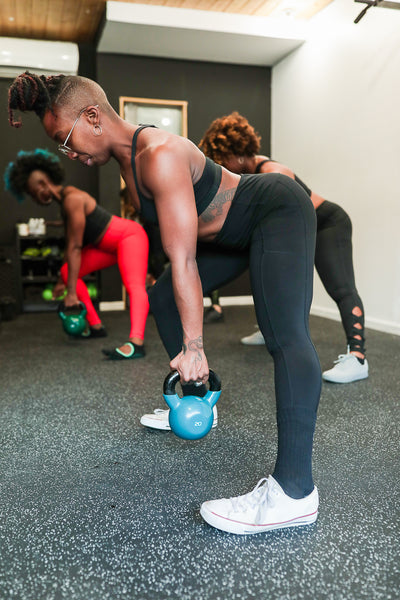In the before time (pre-COVID), I attended an employee wellness event at my job on meditation. I decided meditation wasn’t for me when the instructor told us to quiet our minds. Has she met me before? One thing my mind can’t do is be quiet. I might be reserved on the outside, but my mind is a chatterbox teaming with anxiety on the inside. I’m probably not the only person who gave a hard pass on meditation because that specific approach doesn’t work for them.
That’s unfortunate because there’s substantial evidence that meditation can:
- Reduce anxiety
- Ease depression symptoms
- Lower blood pressure
- Help with pain
- Improve sleep
Through meditation, you can train your mind to become more attentive and aware, which we can all benefit from. There are many different ways to meditate, so if one isn’t working for you, you can try another one. Here are a few forms of meditation and how to get started.
Mindful meditation
Mindfulness is about being in the present — being aware of where you are, what you’re doing, and calming reacting to those things. Technically you can practice mindfulness at any time and everywhere. The point is not going with the flow but paying attention to your thoughts and emotions as you go through the day. But it can be beneficial to set aside time to practice mindfulness, particularly as you’re starting.
Find a quiet place in your house or office where you have few distractions. Sit comfortably in a chair or on the floor (anywhere that you feel stable). As you sit, you should be aware of your body — if you’re sitting on a chair, are your feet touching the ground? Are you sitting up straight or hunched over? What are you doing with your hands? How does your body feel? Pay attention to your breath and the sensations your body is experiencing as you sit. Drop your chin and gaze downward, you can close your eyes if you want, but it’s not necessary.
Your mind will inevitably start to wander, but once that happens, bring it back to focusing on your breathing and how you’re feeling. If your mind continues to veer off the path, engage with those thoughts. Observe what your mind is trying to tell you without needing to react. When you’re ready (you might have set a timer on your phone, or you just feel you’ve done enough), lift your chin, open your eyes and begin to notice your surroundings. Pay attention to your body and how it feels; notice your thoughts and emotions. Most importantly, decide what your intentions are for the day.
Focused meditation
Focused meditation is about focusing on something intently to stay in the present and slow down your inner monologue. Similar to mindfulness meditation, with focused meditation, you pay close attention to things in your surroundings like sound, tactile sensations, smells, or your breathing.
Just like mindfulness, you want to find a quiet place with few distractions. You should choose a target for your focus. Let’s say you want to focus on the smell of the essential oils from your diffuser. Sit comfortably and relax your body. Then turn your attention to your target. Don’t think about what it is but how you experience it. Maybe focus on the sensations you feel as you breathe in the scent. Your mind may start to analyze the target or wander entirely to something else. Just bring your attention back to the experience of the target and the sensation it provides.
It may be hard to sustain focus on an individual target, so these sessions can be as short as a few minutes, to begin with. As you practice more, you can increase the length of the sessions.
Movement meditation
Movement meditation is most commonly associated with yoga, but it encompasses all forms of gentle motion. This form of meditation works well for people who like to let their minds wander and get a sense of calm in action. So you can meditate while walking, doing Pilates, qigong, tai chi, or arranging a bouquet.
Unlike other forms of meditation, where you sit still and focus on your breath or a focal point, movement meditation is about moving through various positions with a mindful and slow pace. As you move, you’re paying attention to your muscles, joints, and other parts of your body you probably never think about unless it is hurt. You’re also thinking about how your body feels as it moves.
As always, you want to be in a comfortable position, focusing on how your breath flows through your body. Whether you’re walking or doing yoga, you may want to put your hands on your body to feel the movement of breath as you breathe in and out. Pay attention to your posture; how does your body feel as you straighten your legs and lengthen your spine. If you’re feeling any discomfort, pay attention to where that discomfort is coming from and adjust your stance to make the discomfort go away. As you move through your workout, continue to pay attention to your body’s feelings and adapt what you’re doing as needed.
Things to consider when meditating
Finding a meditation style that works for you can also depend on other factors. Are you meditating alone (unguided meditation) or with the aid of an instructor (guided meditation)? Are you meditating to calm your mind (calming meditation) or gain insight (insight meditation)? Answering these questions can also help you decide what works best for you. Fortunately, there are many resources (some that are free) to help you find the right meditation style for you. Apps like Headspace and Calm have tons of meditation techniques to help you find what works best for you. Also, YouTube channels like New Horizon – Meditation & Sleep Stories and The Honest Guys can help you on your meditation journey.






Leave a comment